It was late afternoon. The first rains of the season had come down after a lot of drama – gusts of wind, thunder and lightning. The rainfall itself was a mere shadow of the show that was put on prior to the downpour. Soon, it got dark and the streetlights came on. And before I could realise, there were hordes of insects of a particular kind that had emerged from the drenched ground.
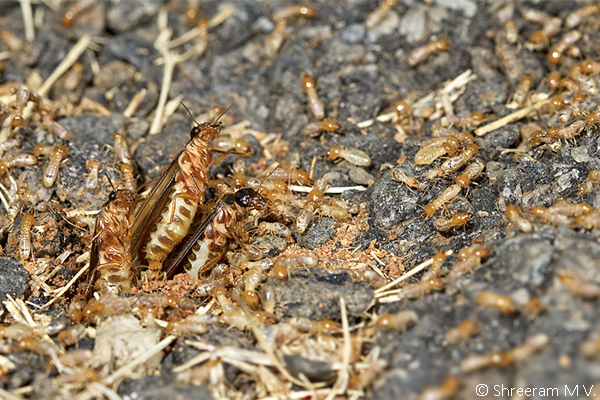
Attracted to the lights, these insects flew straight there on their large gossamer wings. They swarmed around the light for a little while before falling to the ground. This phenomenon is something that most of us have witnessed many times in our lives – perhaps at least once each year.
This is the nuptial flight of the winged termites – the alates. The swarm consists of fertile male and female termites. Many colonies will typically erupt at the same time enabling the termites to find mates from other colonies.
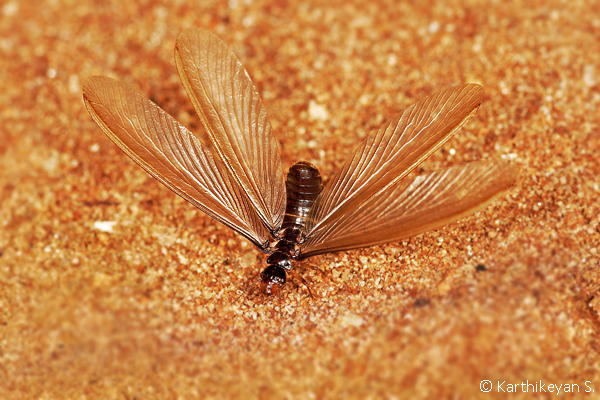
Once on the ground, they lose their wings. A pair of these usually wander off, one behind the other. These are the fertile male and female termites which will go on to start a new colony.
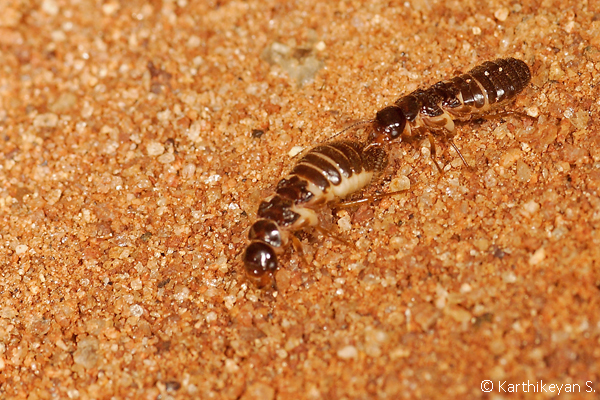
The colony will soon be populated by infertile female termites that are all sisters. To perform various duties of the colony, they are divided into many castes – workers, soldiers, etc. – and are suitably adapted to perform that role. Concerted and coordinated efforts of all the castes keeps the colony alive and functioning well.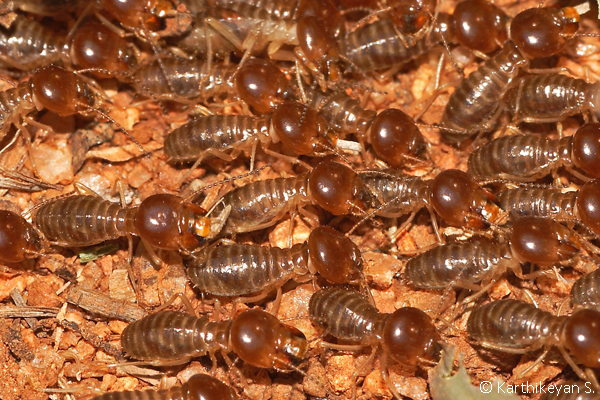
The nuptial flight is a situation that many other creatures capitalise on. After all, these incidents don’t occur too often. Particularly, many insectivorous birds can be seen gorging themselves on the bonanza. The alates are picked at various levels. On the ground, birds like the Grey Junglefowl and other insects like ants take them even as they emerge.
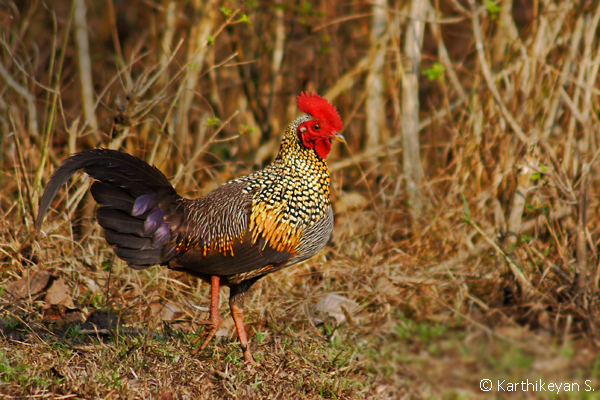
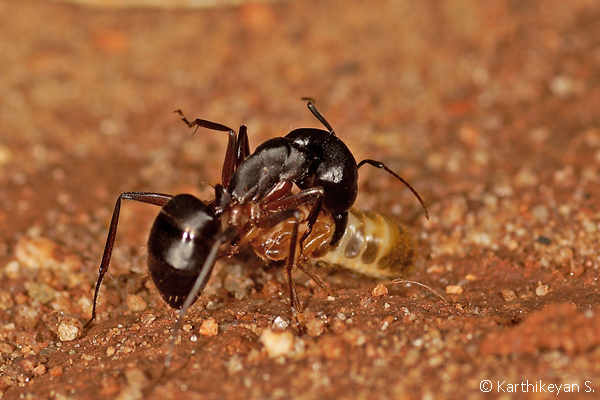
Drongos, bee-eaters, bulbuls, owls and even the fruit-eating barbets and hornbills make the most of the situation. Some, work overtime and hawk the alates even in the dark as they can see the flying insects against the pale sky; in an urban situation, streetlights provide visibility.
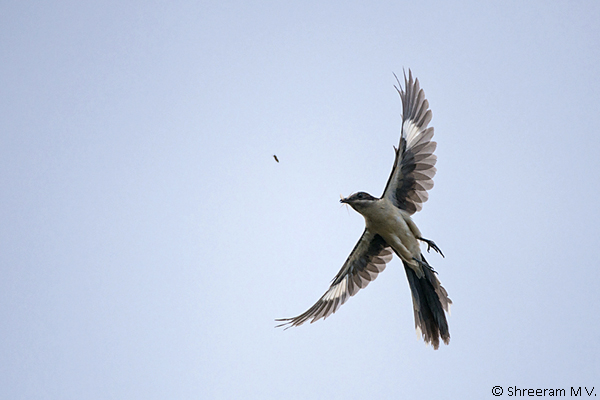
Even very unlikely candidates like the Crested Serpent Eagle are opportunistic and partake in this momentary glut.
Spiders too take a toll on the alates. Those like the Giant Wood Spider use their large webs to trap the weak flying alates and feed on them at leisure.
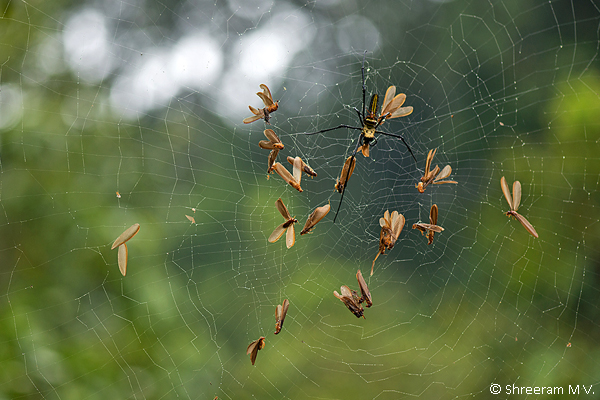
While others actively hunt them.
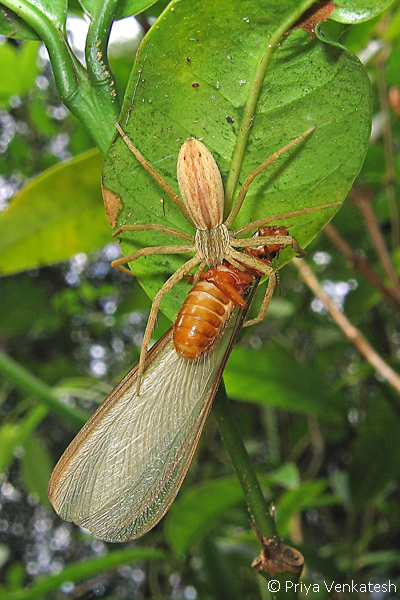
In spite of the onslaught, some alates will survive and establish a colony that perhaps will go on to live for a very long time depending on the species. And, it will continue to provide for the protein-hungry and opportunistic predators every time the fertile alates are ready to emerge from their subterranean homes to find their mates.